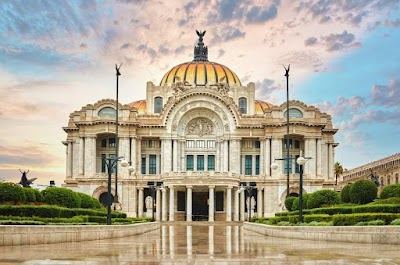Mexico City Metropolitan Cathedral (Catedral Metropolitana de la Ciudad de México)
Overview
Explore the Mexico City Metropolitan Cathedral
Ciudad de México is home to the majestic Mexico City Metropolitan Cathedral, an iconic structure that embodies centuries of history and architectural evolution. Nestled on the northern side of the Plaza de la Constitución—commonly known as the Zócalo—the cathedral exemplifies intricate architectural brilliance and immense historical significance.
A Symbol of Conquest and Faith
The origins of the cathedral date back to the era of the Spanish conquistadors. Following the conquest of Mexico, Hernán Cortés ordered the construction of a church on the sacred grounds of Tenochtitlan, the former Aztec capital. This decision was both symbolic and strategic, representing the new order and faith while unifying the multicultural identity of the burgeoning city.
A Century-Long Construction Journey
Construction of the Metropolitan Cathedral commenced in 1573 and continued for over three centuries. This extended timeline resulted in a captivating blend of architectural styles, predominantly Gothic, Baroque, and Neoclassical. The initial design was crafted by Spanish architect Claudio de Arciniega, inspired by Gothic cathedrals in Spain. As the project evolved, various architects contributed to the design, adapting it to contemporary styles and available resources.
Marvel at the Baroque Facade
The cathedral’s facade is an exquisite example of Baroque architecture, characterized by detailed ornamentation and a grandiose form. Its twin bell towers, each soaring to 67 meters, house 25 bells of varying sizes. Notably, the southern tower, completed in 1793, holds the heaviest bell, known as La Santa María de Guadalupe. The resonant ringing of these bells serves as a profound auditory symbol, echoing through the heart of Ciudad de México.
Step Inside to Discover Sprawling Dimensions
Inside, the cathedral impresses with its expansive dimensions, measuring approximately 128 meters long and 59 meters wide. It features five naves adorned with numerous chapels, each dedicated to different saints. The gilded Altar of the Kings (Altar de los Reyes) stands as a stunning centerpiece, showcasing baroque artistry with intricate gold leaf details and elaborate statues.
A Witness to Historical Events
The cathedral has been a sanctuary and a place of worship, bearing witness to numerous political and social upheavals throughout its history. During the Mexican War of Independence and the subsequent Reforma period, the cathedral's vast space served as a meeting point for various factions and clerical authorities, making it a significant site of historical discourse.
Preserving History Amidst Challenges
However, the weight of history has also taken its toll on the cathedral. Built on the soft soil of a former lakebed, it has suffered from severe subsidence and tilting. Since the late 20th century, extensive restoration and preservation efforts have been initiated to stabilize and rectify these issues. These operations include soil injections and the installation of concrete supports, ensuring the cathedral’s continued prominence in the historical and cultural landscape of Ciudad de México.
Adjacent Wonders: The Metropolitan Tabernacle
Just beside the cathedral lies the Metropolitan Tabernacle (Sagrario Metropolitano), a remarkable structure in its own right. Featuring a stunning Churrigueresque design—an elaborate form of Baroque—it complements the cathedral's grandeur. Completed in 1749, the tabernacle showcases Mexico’s artistic heritage through its intricately carved façade and magnificent interior.
A Testament to Rich History
The Mexico City Metropolitan Cathedral is more than just a place of worship; it stands as a testament to the rich and diverse history of Ciudad de México. Its walls encapsulate stories of conquest, faith, transformation, and resilience. Today, it attracts countless visitors who are awed by its architectural splendor and moved by the palpable sense of history that permeates every corner of this monumental edifice.









